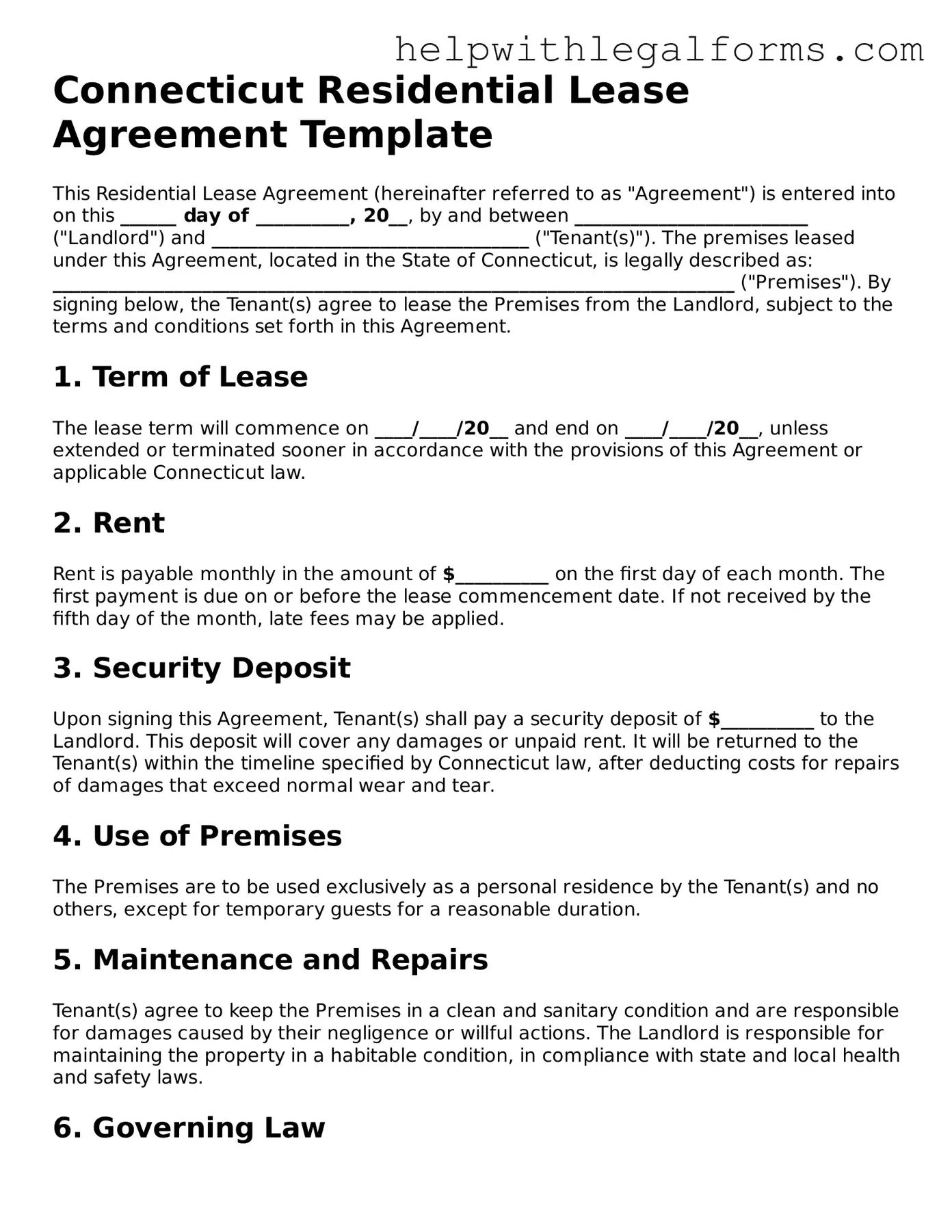Connecticut Residential Lease Agreement Template
This Residential Lease Agreement (hereinafter referred to as "Agreement") is entered into on this ______ day of __________, 20__, by and between _________________________ ("Landlord") and __________________________________ ("Tenant(s)"). The premises leased under this Agreement, located in the State of Connecticut, is legally described as: _________________________________________________________________________ ("Premises"). By signing below, the Tenant(s) agree to lease the Premises from the Landlord, subject to the terms and conditions set forth in this Agreement.
1. Term of Lease
The lease term will commence on ____/____/20__ and end on ____/____/20__, unless extended or terminated sooner in accordance with the provisions of this Agreement or applicable Connecticut law.
2. Rent
Rent is payable monthly in the amount of $__________ on the first day of each month. The first payment is due on or before the lease commencement date. If not received by the fifth day of the month, late fees may be applied.
3. Security Deposit
Upon signing this Agreement, Tenant(s) shall pay a security deposit of $__________ to the Landlord. This deposit will cover any damages or unpaid rent. It will be returned to the Tenant(s) within the timeline specified by Connecticut law, after deducting costs for repairs of damages that exceed normal wear and tear.
4. Use of Premises
The Premises are to be used exclusively as a personal residence by the Tenant(s) and no others, except for temporary guests for a reasonable duration.
5. Maintenance and Repairs
Tenant(s) agree to keep the Premises in a clean and sanitary condition and are responsible for damages caused by their negligence or willful actions. The Landlord is responsible for maintaining the property in a habitable condition, in compliance with state and local health and safety laws.
6. Governing Law
This Agreement shall be governed by and construed in accordance with the laws of the State of Connecticut.
7. Additional Terms
Any additional terms and conditions agreed upon by both the Landlord and Tenant(s) are listed below:
- ______________________________________________________________________
- ______________________________________________________________________
- ______________________________________________________________________
Signatures
By signing below, both the Landlord and Tenant(s) agree to all the terms and conditions of this Residential Lease Agreement.
Landlord's Signature: ______________________________ Date: _____/_____/20__
Tenant(s)' Signature(s): __________________________________ Date: _____/_____/20__
